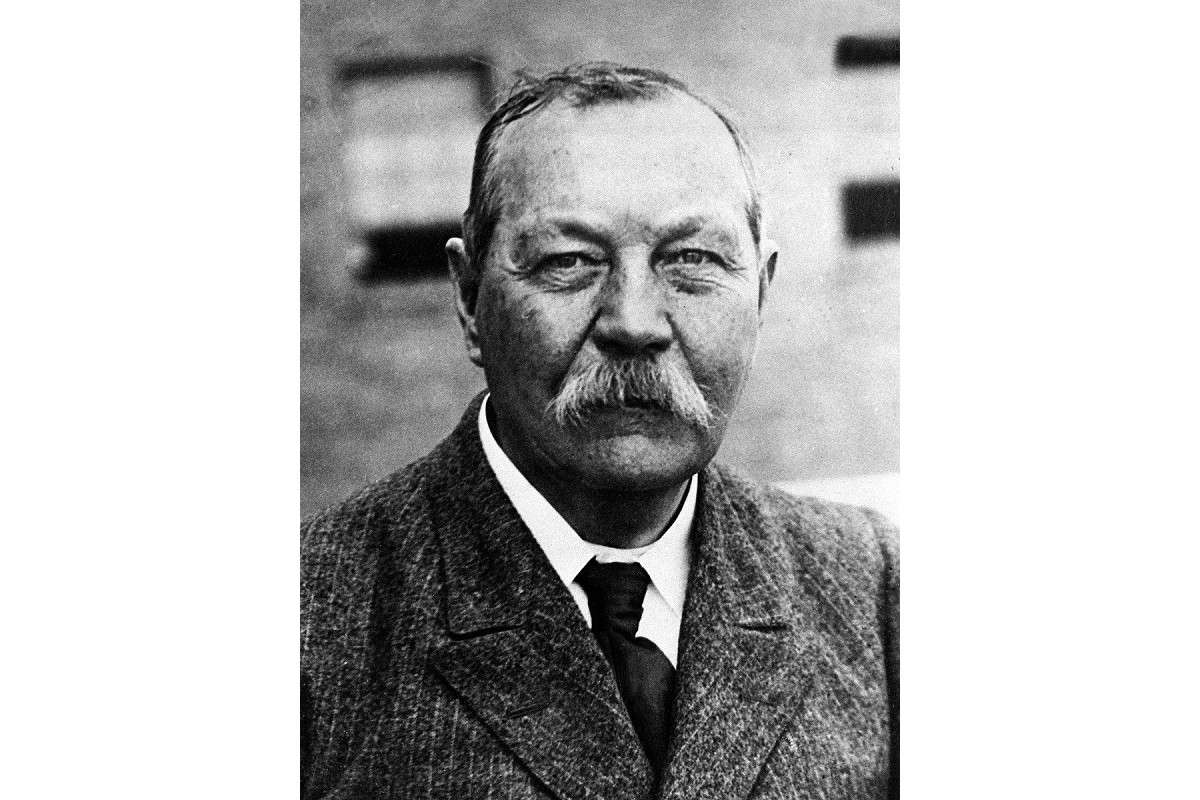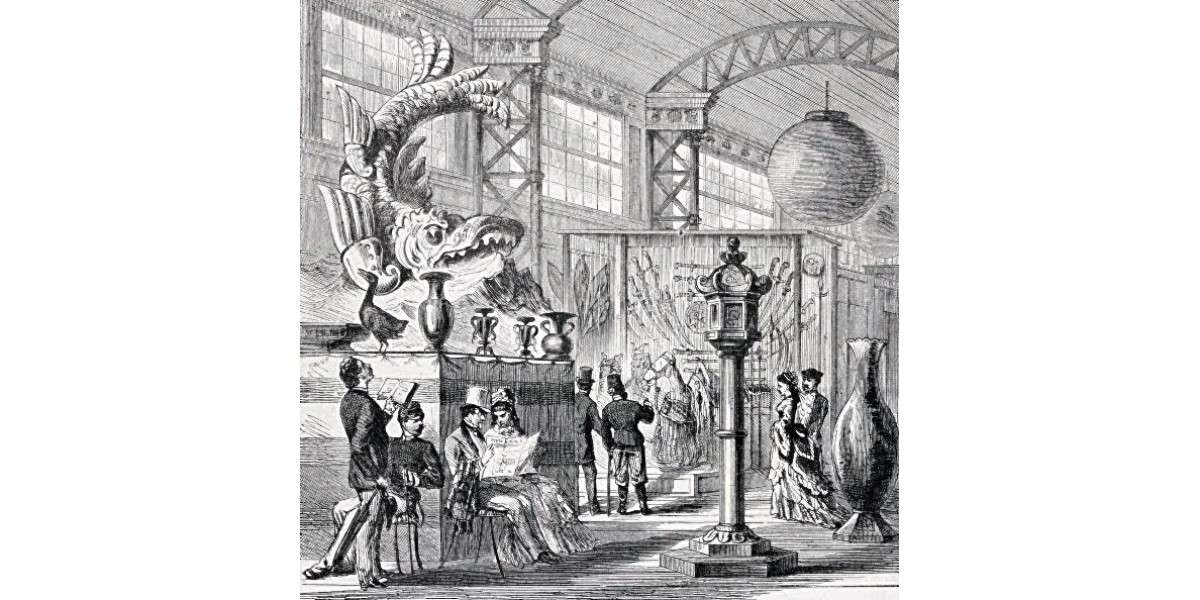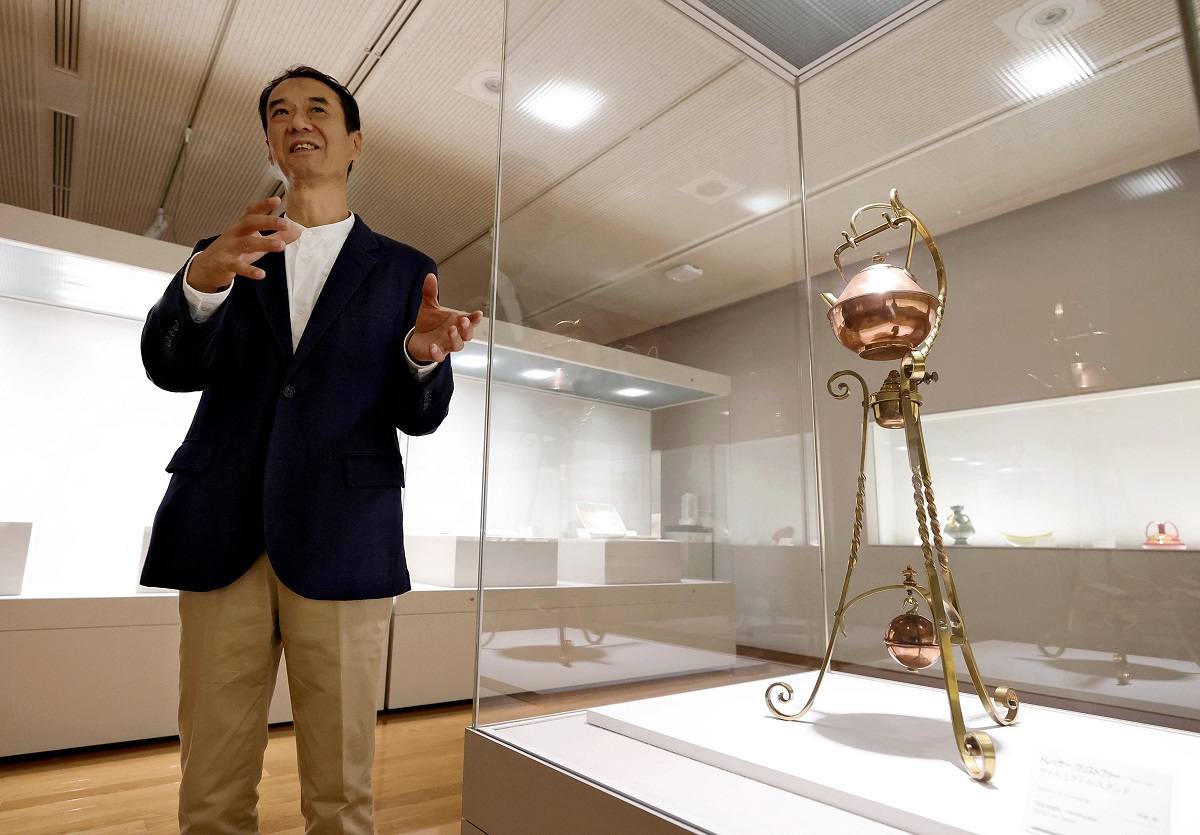Shoso-in through Foreign Eyes / Awe-inspiring Shoso-in Treasures Made Cameo in Sherlock Holmes Story

AP
By Sayaka Nambu / Yomiuri Shimbun Staff Writer
11:22 JST, October 25, 2023
The 75th Annual Exhibition of Shoso-in Treasures will start Saturday at the Nara National Museum, showcasing a selection of precious items that have been preserved for centuries in the Shoso-in repository and convey glimpses of Nara period (710-784) culture.
In recent years, the increase in inbound tourism to Japan has in turn led to a growing number of visitors from overseas coming to the exhibition. What impression do visitors from abroad have of these treasures from Japan’s ancient capital? The history of the connection between the Shoso-in and people from other countries offers some insights into the answer to that question.
This is the first installment in a three-part series.
***
In a scene from “The Adventure of the Illustrious Client,” a Sherlock Holmes short story published in 1925, a baron who is a murderer and has a fondness for Chinese pottery says to Holmes’ sidekick Dr. Watson, “I would ask you what do you know of the Emperor Shomu and how do you associate him with the Shoso-in near Nara? Dear me, does that puzzle you?”
Among the treasures embodying the Nara period’s vibrant Tempyo culture that have been stored in the Shoso-in and will be displayed at this year’s exhibition, three Jizara ceramic plates — made with green, yellow and other glazes — will be a highlight. It remains unclear how much Sir Arthur Conan Doyle (1859-1930), the British author of the Sherlock Holmes detective stories, actually knew about these timeless treasures. However, judging from the baron’s remark that seemed to triumphantly indicate his knowledge of the Shoso-in, the repository’s existence was undoubtedly a special nugget of information the author had acquired about Japan.

Jizara pottery dish
Doyle was born in the 19th century, a time when Japan had ended centuries of self-imposed isolation and had started opening up to the outside world. This was also when the Shoso-in, which had been protected by the seal of the emperor, was revealed to the world for the first time.
To the answer to the baron’s question about Emperor Shomu’s association with Nara and the Shoso-in, Emperor Shomu reigned from the capital of Nara in the eighth century. The Shoso-in is a repository that has protected mainly treasures and items associated with hisF reign.
Doyle had obviously heard about the Shoso-in, but just how he came across the information remains uncertain.
“Doyle never visited Japan, so it’s still an unresolved mystery,” said Masamichi Higurashi, a translator and a preeminent Japanese expert on Sherlock Holmes. But Higurashi, 68, did suggest several theories as to how the author stumbled on the Shoso-in.
In 19th century, the Meiji government hired foreign advisers for their specialized knowledge to assist in the modernization of the nation. One such adviser was Scottish engineer William Burton, who was a childhood friend of Doyle. One of Doyle’s first books contains a dedication to Burton, who was a professor at the Tokyo Imperial University. It is possible that Doyle heard about the Shoso-in from his old friend.
Another theory is that Doyle got wind of the Shoso-in from literature. The 19th century was a time when Japonism, a craze for Japanese art and design, swept through many Western nations.
The opening of Japan in 1854, during the final years of the Edo period (1603-1867), marked the moment when the door to these mysterious islands – from a Western European perspective — in the Far East was unbolted. Many people were captivated by Japanese culture such as kimono and folding fans, and it is widely known that impressionist artists such as Edouard Manet and Pierre-Auguste Renoir were influenced by ukiyo-e woodblock prints.
An illustration of a scene at the 1873 Vienna International Exposition, the first world fair that Japan officially participated in, depicted the mood toward Japan in those days. The picture of Japan’s pavilion shows several men wearing top hats and women enjoying themselves in front of a huge golden shachihoko, a mythical fish with a tigerlike head.

Interior view of the Japanese pavilion, Vienna Universal Exhibition, Austria, illustration from Album della Esposizione Universale di Vienna
Doyle knew about the Shoso-in’s existence at that time, so he probably wove that line into his story to pique the attention of readers.

Christopher Dresser
The trail on unraveling how Doyle first heard about the Shoso-in goes cold there, but it is known that the first Westerner to go inside the treasure storehouse was a British man named Christopher Dresser (1834-1904). Dresser was a 19th-century ornament designer who was also involved in designing tableware for Wedgwood, which has been granted a British Royal Warrant for supplying goods to the royal households.
In September, an exhibition at Koriyama City Museum of Art in Fukushima Prefecture included a Dresser-designed copper kettle on a brass stand with three legs featuring curled ends.
This eye-catching piece was a blend of “Japanese” and “Western” inspirations. “[Dressor] observed Japanese artworks and fine arts during the Meiji era. His works have shown such influences,” said Hidehiko Sato, former deputy director of the museum.
Dresser had a keen interest in the cultures of other countries. He studied antiquities of the Middle and Near East and Egypt, and he eagerly wished to set foot in Japan. Dresser’s opportunity arose when a British museum donated some artworks to Japan. He accompanied them as an adviser and stayed in Japan for about four months from December 1876.
Dresser’s close connection to the Shoso-in, which had gone undetected for many years, was revealed in a thesis Sato wrote about 15 years ago.
Sato noticed that Dresser wrote in his book “Japan, its Architecture, Art, and Art Manufactures,” that he was invited by the Meiji government to inspect the Shoso-in on Feb. 3, 1877. Sato also discovered, with the help of Kasuga Taisha shrine near the repository, that the name “Doreseru” was written in Japanese in the shrine’s record of daily affairs for that day.
“Saturday the 3d of February 1877 will always remain a great day in my history,” Dresser wrote in his book.

Hidehiko Sato, former deputy drector of the Koriyama City Museum of Art, describes the works of Christopher Dresser, including an exhibit he is standing next to, in September.
The Shoso-in contained not only ancient Japanese treasures, but also items brought to Japan from the Middle East and Asia along the Silk Road. As a designer well versed in the fine arts and crafts of various nations, Dresser sensed their value. His excitement was clear when he realized that designs and techniques that were gradually being lost in the nations from where those items hailed had been preserved here exactly as they had been when they left the skilled craftsmen’s hands. “What this vast number of great trunks may contain I cannot possibly say, but in all probability there are here objects which would throw light on many subjects now imperfectly understood, and would do much towards perfecting a history now unknown to the world,” Dresser wrote.
To convey the value of the Shoso-in to Westerners, Dresser’s book carries an extract on the treasures from The Japan Weekly Mail, an English-language newspaper published in Yokohama during the Meiji era. “What would the antiquarians of Europe say if an ancient building containing the household furniture and effects of Charlemagne … were now to be opened for the first time and the contents announced to be on view, all in fine preservation!” Dresser quoted the newspaper as saying.
A sword said to have belonged to Charlemagne, who was also known as Charles the Great and was the emperor who laid the foundation for what became the Holy Roman Empire in the early ninth century, is now kept at the Louvre Museum in Paris. However, it remains unclear whether the story behind the sword is true.
This year’s Shoso-in exhibition includes the Quilted Nine-Panel Kesa in Mottled Colors. Emperor Shomu (701-756), who lived around the same time as Charlemagne, cherished this item, which is listed first on the Kokka Chinpo Cho record of the emperor’s prized possessions. Made in the style of an ancient Indian robe, the item comprises silks of different colors stitched and sewn together in a pattern resembling bark. Despite being about 1,300 years old, this kesa robe remains in superb condition.
The Annual Exhibition of Shoso-in Treasures will start Saturday. Visitors, regardless of which country they come from, will likely be amazed by the items on display.

Quilted Nine-Panel Kesa in Mottled Colors
Popular Articles
Popular articles in the past 24 hours
-

Poll Finds High Approval Rating for PM Takaichi’s Economic Measur...
-

Diplomacy with Central Asia: Utilize Long-Established Relationshi...
-

Japan Actor Ryoko Hirosue Given Summary Indictment over Car Accid...
-

Japanese Actors Haru, Mahiro Takasugi Announce Marriage
-

Japan Shares Rise as Bond Yields Retreat; Tech Jitters Weigh on N...
-

9 Japanese Police Officers Suspected of Online Casino Gambling
-

Hepburn Romaji Deemed Standard for Japanese Words, Names; Change ...
-

Mt. Oyama Offers Historical Site Filled with Nature, Spirituality
Popular articles in the past week
-

Israeli Tourists Refused Accommodation at Hotel in Japan’s Nagano...
-

U.S. Senate Resolution Backs Japan, Condemns China's Pressure
-

Sharp Decline in Number of Chinese Tourists But Overall Number of...
-

Japan Set to Participate in EU's R&D Framework, Aims to Boost Coo...
-

China Attacks Japan at U.N. Security Council Meetings; Representa...
-

Japan Backs Public-Private Cooperation on Economic Security; Nati...
-

As Chinese Tourists Shun Japan, Hotels and Stores Suffer
-

Bus Bound for Hokkaido's New Chitose Airport Catches Fire Wednesd...
Popular articles in the past month
-

Tokyo Economic Security Forum to Hold Inaugural Meeting Amid Tens...
-

Keidanren Chairman Yoshinobu Tsutsui Visits Kashiwazaki-Kariwa Nu...
-

Imports of Rare Earths from China Facing Delays, May Be Caused by...
-

University of Tokyo Professor Discusses Japanese Economic Securit...
-

Japan Pulls out of Vietnam Nuclear Project, Complicating Hanoi's ...
-

Govt Aims to Expand NISA Program Lineup, Abolish Age Restriction
-

Blanket Eel Trade Restrictions Rejected
-

Key Japan Labor Group to Seek Pay Scale Hike
"Society" POPULAR ARTICLE
-

M4.9 Earthquake Hits Tokyo, Neighboring Prefectures
-

Israeli Tourists Refused Accommodation at Hotel in Japan’s Nagano Pref., Prompting Protest by Israeli Embassy and Probe by Prefecture
-

M7.5 Earthquake Hits Northern Japan; Tsunami Waves Observed in Hokkaido, Aomori and Iwate Prefectures
-

Tsukiji Market Urges Tourists to Avoid Visiting in Year-End
-

High School in Kyoto Says Students Shoplifted during Recent School Trip to Bali, Indonesia
JN ACCESS RANKING
-

Tokyo Economic Security Forum to Hold Inaugural Meeting Amid Tense Global Environment
-

Keidanren Chairman Yoshinobu Tsutsui Visits Kashiwazaki-Kariwa Nuclear Power Plant; Inspects New Emergency Safety System
-

Imports of Rare Earths from China Facing Delays, May Be Caused by Deterioration of Japan-China Relations
-

University of Tokyo Professor Discusses Japanese Economic Security in Interview Ahead of Forum
-

Japan Pulls out of Vietnam Nuclear Project, Complicating Hanoi’s Power Plans









